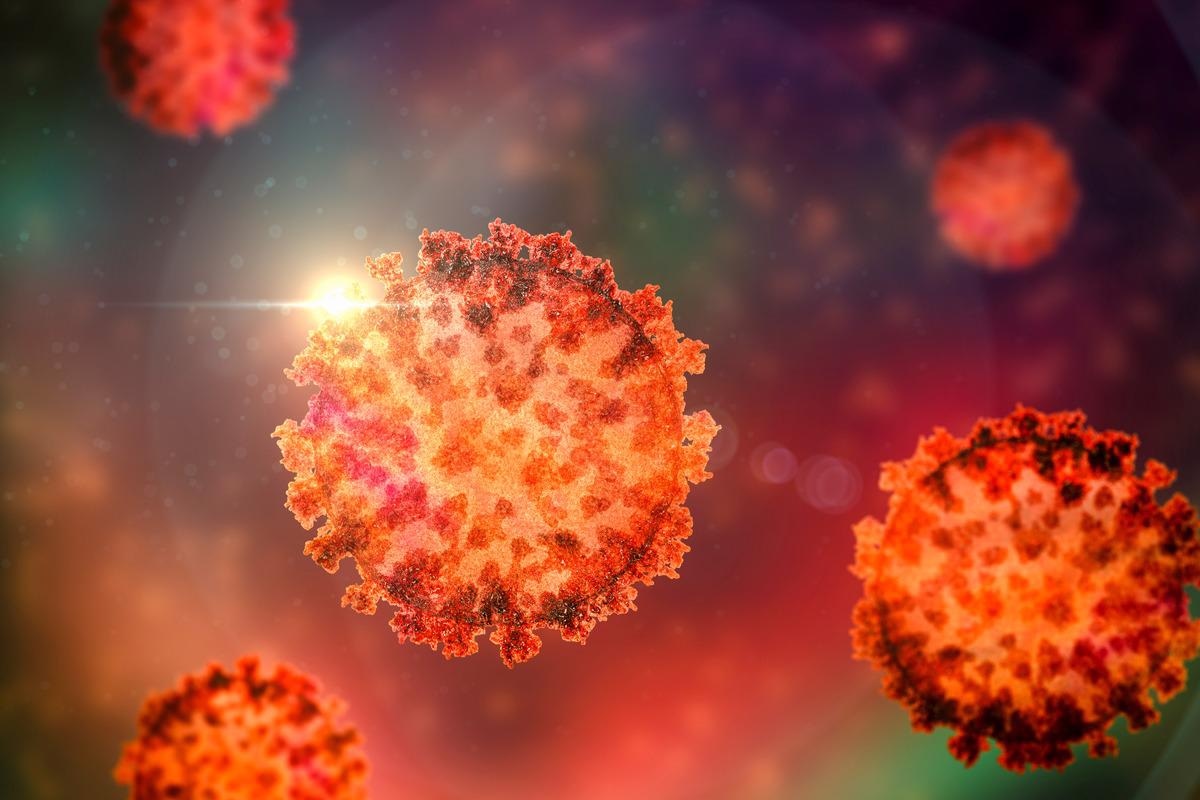A team of UK-based scientists has recently developed a within-host model to determine the dynamics of severe acute respiratory syndrome coronavirus 2 (SARS-CoV-2) infection in the upper respiratory tract of affected individuals. The study finds that infected individuals can transmit the disease for up to 8 days. However, the virus can be detected in their body for up to 27 days. The study is currently available on the medRxiv* preprint server.
 Study: A within-host model of SARS-CoV-2 infection. Image Credit: Kateryna Kon/Shutterstock
Study: A within-host model of SARS-CoV-2 infection. Image Credit: Kateryna Kon/Shutterstock

 *Important notice: medRxiv publishes preliminary scientific reports that are not peer-reviewed and, therefore, should not be regarded as conclusive, guide clinical practice/health-related behavior, or treated as established information.
*Important notice: medRxiv publishes preliminary scientific reports that are not peer-reviewed and, therefore, should not be regarded as conclusive, guide clinical practice/health-related behavior, or treated as established information.
Background
Severe acute respiratory syndrome coronavirus 2 (SARS-CoV-2), the causative pathogen of coronavirus disease 2019 (COVID-19), is a respiratory virus that spreads from person to person primarily via respiratory droplets and aerosols. Various epidemiological studies have indicated that the risk of SARS-CoV-2 infection in susceptible individuals depends on the rate of contact and probability of transmission.
While the contact rate is mainly associated with the number of exposures at a given time, the transmission probability could be influenced by many factors, including duration of contact, the infectiousness of individuals, and environmental conditions. It is known that the infectiousness of individuals is directly proportional to their viral load in the respiratory tract.
In the current study, the scientists have developed a mathematical model to evaluate the dynamics of SARS-CoV-2 infection in the upper respiratory tract.
Study design
The study was conducted on the participants of a human challenge study. A target-cell limited model was used to describe the viral dynamics in the nasal mid-turbinate swabs of the participants. A mathematical algorithm (Bayesian Computation Sequential Monte Carlo) was used to predict the model parameters from the human challenge data.
A total of 34 young, infection-naïve participants were challenged with wild-type SARS-CoV-2 intranasally. Of them, 18 developed infections. The model, which predicts both infectious and total viral loads, provided a quantitative description of the within-host viral dynamics.
Important observations
The estimation made by the model revealed that productively infected cells are lost at a rate of 1.17 per day during the early phase of infection. This rate increased to 16.12 per day by day 14 with the establishment of an adaptive immune response.
The rate of production of infectious virus from infected cells was estimated to be 3.7 plaque-forming unit (PFU)/ml per day. In contrast, the rate of production of total viral RNA was estimated to 2.57 × 103 RNA copies/ml per day, which is significantly higher than that for the infectious virus.
In a fully susceptible cell population, the number of secondary cellular infections resulting from a single infected cell is termed as within-host basic reproduction number. The current model revealed a within-host reproduction number of 11.
Timescale of SARS-CoV-2 infection
The analysis of infection period revealed that an individual tests positive by polymerase chain reaction (PCR) around one day after infection onset. However, it takes around two days for the individual to become infectious. As estimated by the model, the infectiousness of individuals can persist for up to 8 days, whereas they can test positive in PCR test for up to 12 days. A PCR positive status was maintained for up to 27 days after infection onset for some individuals.
The predictions made by the current model were validated against the Assessment of Transmission and Contagiousness of COVID-19 in Contacts (ATACCC) study, which is a longitudinal study estimating viral dynamics in vaccinated and unvaccinated individuals who have been infected with different variants of SARS-CoV-2 through community transmission. However, the current model included only unvaccinated individuals with wild-type SARS-CoV-2 infection.
Despite differences in the study population, the current model mostly explained the data obtained from the ATACCC study. This indicates that the current findings can be applied to the general population.
Study significance
The study describes the dynamics of wild-type SARS-CoV-2 infection in the human upper respiratory tract, which is vital information to determine the risk of viral spread as well as the effects of antiviral medicines and vaccines. Overall, the study provides useful information regarding the dynamics of interaction between virus, host cell, and host immune response.

 *Important notice: medRxiv publishes preliminary scientific reports that are not peer-reviewed and, therefore, should not be regarded as conclusive, guide clinical practice/health-related behavior, or treated as established information.
*Important notice: medRxiv publishes preliminary scientific reports that are not peer-reviewed and, therefore, should not be regarded as conclusive, guide clinical practice/health-related behavior, or treated as established information.